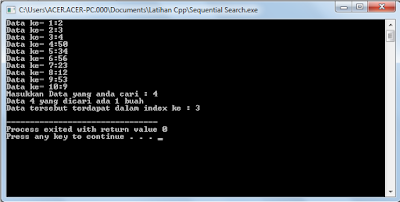
- Sequential search in javascript how to#
- Sequential search in javascript code#
- Sequential search in javascript series#
In order to sync the user's progress across devices, use the refresh property in Adaptive Card JSON. The following image shows different users can be at different stages of the workflow and states of the card: The workflow is also useful for conducting quizzes using sequential Adaptive Cards. The following image shows the Sequential Workflow:Ī user can progress through their workflow without modifying the card for other users. User can also go back and forth through the cards as per the logic defined by the bot developer. With Action.Execute the user's choice for various items, such as food and drinks can be recorded sequentially. Action.Execute supports Sequential Workflows, which allows bot developers to return Adaptive Cards in response to a user action.įor example, take a scenario where the cafeteria wants to take an order for a team or channel.

Sequential search in javascript series#
Using Sequential Workflows, Adaptive Cards are updated on user action and user can progress through a series of cards that require user input.
Sequential search in javascript code#
Here's how the code looks like when using map(): var ordersContainingBag = orders.Adaptive Cards now support Sequential Workflows that are updated on user action. Let's say you want to create a new array from the orders array, but you want each element to have only these 3 attributes: id, product, and total, where the total is calculated from price + tax. With this technique, it's possible to do simple numeric or string operations as well as complex ones like changing the array structure. The map() method lets you modify each item in an array. This type of searching algorithms sequentially checks each element of.

Tip 2: Use map() to transform each item in an array It sequentially checks each array element for the target value until a match is found or all the elements have been searched. A linear search or sequential search is a method for finding an element within a list. So, how does the filter() function work? Basically, it iterates over each element in the array and returns a new array with only elements that match the specified criteria. Yes, JavaScript already provides methods for determining whether a given element is in an.
Sequential search in javascript how to#
The format of sequential for loop: for (var i = 0 i order.category = "Bag") Lets see how to think about binary search on a sorted array. However, most developers will agree that typing them can be kind of a pain! It's not bad using this technique, but it often makes your code too lengthy and hard to understand if overused. The traditional code for loops are useful, powerful, and not difficult to write. Why avoid sequential looping on an array?

It checks every one of its elements one by one in sequence, until desired element is not found. Should you avoid sequential for loops all the time? Are they bad? Read on to find out. Sequential search is also called as Linear search. This tech tutorial will show you how they can be used to process arrays efficiently without having to write sequential for loops. If you haven't heard about them, don't worry. To access each element in an array, sequential "for loops" may be one technique you use often-but do you know that you can use filter(), map(), and reduce() methods in JavaScript to process arrays more elegantly? In this case it takes only 1 comparison to return the successful search. Consider the process of logging into a website. If we pay close attention, we can find search algorithms everywhere. Arrays are one of the most common data structures used in programming. The best case of sequential search is if the first element of the list is the target. Linear Search in JavaScript Abhilash Kakumanu Introduction Searching, in the context of Computer Science, is the process of locating a particular element in the given list/array.


 0 kommentar(er)
0 kommentar(er)
